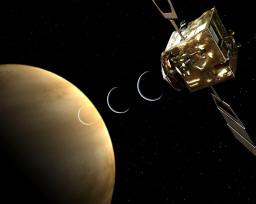Italian scientists on Thursday said they had detected a molecule in the atmosphere of Venus linked to the presence of ozone.
This is the first time the molecule, called hydroxyl, has been discovered on a planet other than Earth, where it has a key role in purging pollutants.
It was found in the highest strata of Venus's atmosphere around 100km above the planet's surface thanks to an Italian-built thermal-imaging spectrometer aboard the European Space Agency (ESA) Venus Express spacecraft.
''Venus Express has already shown us that Venus is much more Earth-like than once thought. The detection of hydroxyl brings it a step closer,'' said Giuseppe Piccioni, a researcher at the National Astrophysics Institute (Inaf).
''Hydroxyl plays an important role in the chemical processes of the atmosphere and we believe that its presence on Venus, like that on Earth, is linked to that of ozone, which absorbs radiation from the Sun'' he explained.
The ESA described the discovery of hydroxyl - which is composed of one hydrogen atom and one oxygen atom - as an ''important new tool'' that would help scientists unlock the workings of Venus's dense atmosphere.
''On Earth, ozone heats the stratosphere making it stable and protecting the biosphere from harmful ultraviolet rays. Now scientists can set about estimating the amount of ozone in (Venus's) atmosphere,'' it added.
The unmanned Venus Express spacecraft has been orbiting Venus since April 2006 to study the planet's atmosphere and cloud formations.
Venus shares with Earth and Mars a solid surface, a comparable surface composition, an atmosphere and a weather system, according to the ESA.









